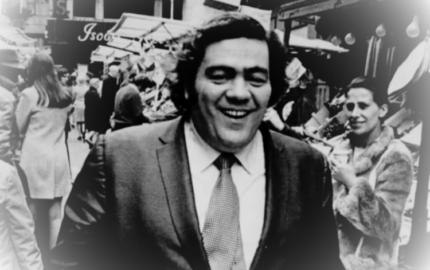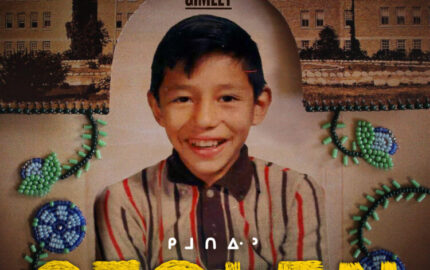Schmickle and the project's editor, Laurie Hertzel, wrote us the following comments on this project:
Sharon Schmickle: Two years ago, I began hearing that several thousand Liberians had arrived recently in Minnesota bearing tales and trauma from their West African nation's longstanding civil war. The Star Tribune ran two stories about them in 2005. Then last summer two major new angles developed. First, Minnesota was chosen as a site for Liberia's truth and reconciliation process because so many survivors with critical information about civil war atrocities had moved to the state. Second, the U.S. Dept. of Homeland Security decided to terminate the temporary protected status that had allowed thousands of Liberians to live and work in the United States since 1992. They must leave the United States by Oct. 1st.
Regina McCombs, the project's online producer, and I agreed we had rich material for an in-depth report about Liberians in Minnesota. We recruited Jerry Holt, a photographer who had worked with me in Egypt in 2005 on stories about displaced Africans. With encouragement from key editors, we started by simply getting to know Liberians—hanging out at barber shops, churches and specialty grocery stores. I put out the word through ministers and community leaders that we were looking for individuals who would be willing to talk about the war and the future if they were sent back to Africa.
Cleo Harris was one of about two dozen Liberians who called me to volunteer. After an initial interview with her, Jerry and I saw her at least twice a week, always making recordings and photos for the Web site as well as gradually getting to know her very personal story. We followed her to gatherings with relatives, the beauty shop and her daughter's after-school activities. Sometimes Jerry just sat in a corner in her townhouse, shooting pictures. Sometimes I went alone to talk one on one.
Meanwhile, Regina gathered video depicting day-to-day life for Liberians in Minnesota. The Liberians were immensely helpful, inviting us to baby showers, prayer breakfasts and cultural events. They opened their photo albums and welcomed us into their kitchens.
It very quickly became clear that one distinctive aspect of the story was the Liberians' unique history. Like Harris, many were eager to tell us about ancestors who had been slaves in America. So we developed that history as part of a narrative about African families facing yet another Atlantic crossing. To complete the visuals, we borrowed photos Harris and others had carried from Africa. And we recruited a local professor to shoot video during a visit to Liberia in January. In all, the project took about three months.
Laurie Hertzel adds: We knew that Sharon was on to a very important story that no one else had yet told. We also knew that we were up against some obstacles as far as making it relevant to our readers: The story was about poor black immigrants who had fled a war-torn and impoverished country. We have written a lot of stories about immigrants over the last few years as more refugees from Laos, Somalia and elsewhere find their way to Minnesota. We knew that we had to make this series deeply compelling right out of the chute, to grab readers and keep them with us for three days. We did that through narrative storytelling. Cleo Harris's story was dramatic enough and touched most of the themes of the project—the history, the war atrocities, the temporary protected status, the truth and reconciliation. We knew we could use Cleo as a vehicle to tell a gripping story and guide the reader through the complicated issues.
Read “A People Torn: Cleo's Story,” by Sharon Schmickle
Sharon Schmickle: Two years ago, I began hearing that several thousand Liberians had arrived recently in Minnesota bearing tales and trauma from their West African nation's longstanding civil war. The Star Tribune ran two stories about them in 2005. Then last summer two major new angles developed. First, Minnesota was chosen as a site for Liberia's truth and reconciliation process because so many survivors with critical information about civil war atrocities had moved to the state. Second, the U.S. Dept. of Homeland Security decided to terminate the temporary protected status that had allowed thousands of Liberians to live and work in the United States since 1992. They must leave the United States by Oct. 1st.
Regina McCombs, the project's online producer, and I agreed we had rich material for an in-depth report about Liberians in Minnesota. We recruited Jerry Holt, a photographer who had worked with me in Egypt in 2005 on stories about displaced Africans. With encouragement from key editors, we started by simply getting to know Liberians—hanging out at barber shops, churches and specialty grocery stores. I put out the word through ministers and community leaders that we were looking for individuals who would be willing to talk about the war and the future if they were sent back to Africa.
Cleo Harris was one of about two dozen Liberians who called me to volunteer. After an initial interview with her, Jerry and I saw her at least twice a week, always making recordings and photos for the Web site as well as gradually getting to know her very personal story. We followed her to gatherings with relatives, the beauty shop and her daughter's after-school activities. Sometimes Jerry just sat in a corner in her townhouse, shooting pictures. Sometimes I went alone to talk one on one.
Meanwhile, Regina gathered video depicting day-to-day life for Liberians in Minnesota. The Liberians were immensely helpful, inviting us to baby showers, prayer breakfasts and cultural events. They opened their photo albums and welcomed us into their kitchens.
It very quickly became clear that one distinctive aspect of the story was the Liberians' unique history. Like Harris, many were eager to tell us about ancestors who had been slaves in America. So we developed that history as part of a narrative about African families facing yet another Atlantic crossing. To complete the visuals, we borrowed photos Harris and others had carried from Africa. And we recruited a local professor to shoot video during a visit to Liberia in January. In all, the project took about three months.
Laurie Hertzel adds: We knew that Sharon was on to a very important story that no one else had yet told. We also knew that we were up against some obstacles as far as making it relevant to our readers: The story was about poor black immigrants who had fled a war-torn and impoverished country. We have written a lot of stories about immigrants over the last few years as more refugees from Laos, Somalia and elsewhere find their way to Minnesota. We knew that we had to make this series deeply compelling right out of the chute, to grab readers and keep them with us for three days. We did that through narrative storytelling. Cleo Harris's story was dramatic enough and touched most of the themes of the project—the history, the war atrocities, the temporary protected status, the truth and reconciliation. We knew we could use Cleo as a vehicle to tell a gripping story and guide the reader through the complicated issues.
Read “A People Torn: Cleo's Story,” by Sharon Schmickle


